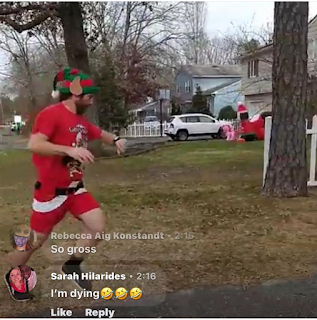The podcast title is “Under the Tent'' hosted by Brandon Fogarty who I met at the Keystone Backyard Ultra in May this year. My initial reaction was of excitement as it was the first time any podcast host had asked me to be a guest. I love running. I love writing and talking about running. My wife has heard more about ultras from me than she ever wanted to. So why wouldn’t I be excited about being asked to talk about ultrarunning with another runner? As the time to record got closer, I became more nervous and less excited. I worried I’d say something dumb or just stumble on my words too much. It mostly just felt like fear of judgment when you’re completely unsure how many people are going to listen to the conversation you’re about to have. I’m sure these were all pretty normal fears for almost all first-time podcast guests.
After chatting with Brandon for about an hour, we said goodbye and then I began to wonder how it went and how I sounded. I felt like it went pretty well immediately afterwards. I did honestly have fun chatting about the backyard race format and recounting a few stories of races I’ve run, but as time went on, I began to think of things I should have said. Other ways I should have answered certain questions. I’m guessing this is pretty normal for most podcast guests and hosts alike for that matter. I’m sure thoughts of everything from “I wish I would have followed up with this question instead” to “I should have mentioned that story from that race” to “Damn it! I should have credited that person and publicly thanked them!” are pretty standard fare for everyone following a podcast recording.
For me, I felt like my last example (Damn it! I should have credited that person and publicly thanked them!”) was my biggest flub. Who did I forget to thank? My wife of course. When Brandon asked about being a father of three and managing the responsibilities there with running and training for ultramarathons, I feel like I completely missed the mark on that question. I started talking about priorities and how as much as I love running, I still prioritize a quality family life over my running life. Which is true for me and I still stand by that, but in retrospect it was the perfect time to mention the primary reason I’m able to pursue my passion for running and chase my running goals is due to the sacrifices my wife makes to allow that to happen. It was the perfect time to credit her and thank her for her enormous and vital role in any running goals I reach. But I failed to do it at the time.
Now as I’m writing this and giving more thought to this podcast interview and the differences of the dialog format that I’m less comfortable with versus the written format that I’m accustomed to, I’m not surprised I have so many worries about whether what I said was good enough or how I could have improved the discussion. When I write race reports or more general blog posts I write, read it, read it again, rewrite, and reread and on and on until I am content with it. To me, it feels like there is more room to make errors and more opportunity to fix those errors with the written format than the recorded dialog. However, the recorded dialog can lead to discussions and topics that never would have percolated out if writing alone. So there truly is a beauty and set of unique benefits to both.
Given the circumstances, I’m happy I took the opportunity to be a guest on Brandon’s podcast. I still haven’t heard the recording yet at this point, but if nothing else the experience allowed me to have an hour-long chat with another runner all about ultrarunning. And maybe the most valuable lesson I learned as a result was that it reminded me to be grateful to my wife for making it possible for me to pursue my passion while maintaining a healthy family life with our kids at home. Additionally, it reminded me that I should let her know how thankful I am for that more often. So, with that final thought, here is what my answer should have been during the podcast:
I couldn’t do what I do without my saint of a wife, Amanda. Without her endless support my running achievements would not have been possible. She has encouraged me and pushed me to achieve more than I thought I was capable of on many occasions. She has helped me become a better version of myself than the self that I knew or thought I was destined to be. From helping me to carve time out of our busy family and work lives to generously applying lubricant to my severely chafed body parts, she has been one of my greatest blessings in my running life and beyond. Weekends that would have been just me getting away by myself for a race weekend became mini vacation family camping trips with Amanda caring for the kids while I’m out running overnight. Those types of trips mean excess stress and work on her end and extra special aid station support and finish line moments for me when my entire family is waiting there for me.
We have a friend who says that Amanda is “too nice for this world”. I couldn’t agree more. I know it’s meant as a compliment, but I could understand how if taken from a different perspective it could sound like someone pointing out a flaw. Although, at least in my opinion, if a person’s greatest shortcoming is being too nice for this world then it is the world that is at fault, not the person. It’s not that Amanda is too nice for this world; it’s that this world isn’t nice enough for her.









































